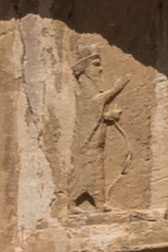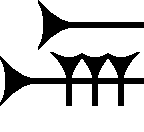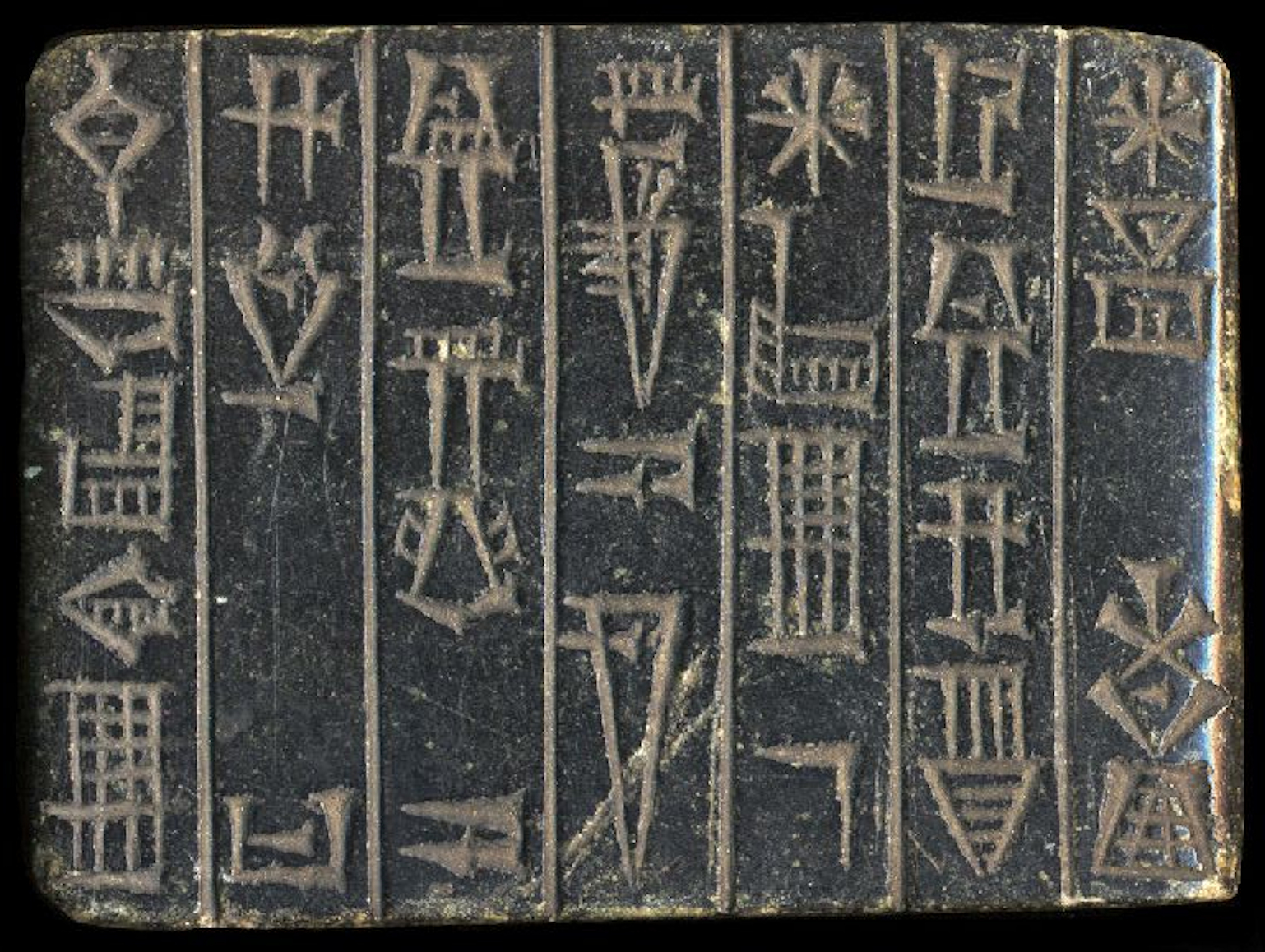|
Kurigalzu II
Kurigalzu II (c. 1332–1308 BC short chronology) was the 22nd king of the Kassite or 3rd dynasty that ruled over Babylon. In more than twelve inscriptions, Kurigalzu names Burna-Buriaš II as his father. Kurigalzu II was placed on the Kassite throne by the Assyrian king Aššur-Uballiṭ I, reigned during a period of weakness and instability for twenty five years, eventually turning on his former allies and quite possibly defeating them at the battle of Sugagu. He was once thought to have been the conqueror of the Elamites but this now tends to be assigned to the earlier king of this name, together with the '' Chronicle P'' account. There is a gap of a little over forty years between his reign and that of his earlier namesake, Kurigalzu I and, as it was not customary to assign regnal year numbers, and they both had lengthy reigns, this makes it exceptionally difficult to distinguish for whom an inscription is intended. especially pages 205 - 207. A few royal inscriptions are ... [...More Info...] [...Related Items...] OR: [Wikipedia] [Google] [Baidu] |
List Of Kings Of Babylon
The king of Babylon (Akkadian language, Akkadian: , later also ) was the ruler of the ancient Mesopotamian city of Babylon and its kingdom, Babylonia, which existed as an independent realm from the 19th century BC to its fall in the 6th century BC. For the majority of its existence as an independent kingdom, Babylon ruled most of southern Mesopotamia, composed of the ancient regions of Sumer and Akkad (region), Akkad. The city experienced two major periods of ascendancy, when Babylonian kings rose to dominate large parts of the Ancient Near East: the First Babylonian Empire (or Old Babylonian Empire, 1894/1880–1595 BC) and the Second Babylonian Empire (or Neo-Babylonian Empire, 626–539 BC). Babylon was ruled by Hammurabi, who created the Code of Hammurabi. Many of Babylon's kings were of foreign origin. Throughout the city's nearly two-thousand year history, it was ruled by kings of native Babylonian (Akkadian), Amorites, Amorite, Kassites, Kassite, Elamite, Arameans, Aramean, ... [...More Info...] [...Related Items...] OR: [Wikipedia] [Google] [Baidu] |
Kudurru Mentioning The Name Of The Kassite King Kurigalzu II, From Nippur, Iraq, Ancient Orient Museum
A kudurru was a type of stone document used as a boundary stone and as a record of land grants to vassals by the Kassites and later dynasties in ancient Babylonia between the 16th and 7th centuries BC. The original kudurru would typically be stored in a temple while the person granted the land would be given a clay copy to use to confirm legal ownership. Kudurrus are often linked to what are usually called "ancient kudurrus", land grant stones from the third millennium (typically Sargonic and Ur III) which serve a similar purpose though the word kudurru did not emerge until the 2nd millennium (Middle Babylonian in fact). Background The objects are traditionally called kudurru which is Akkadian for "frontier" or "boundary". because early epigraphers frequently found that word in the text and assumed they were placed in agricultural setting, not the temples they actually were. While there is consensus on the main group of kudurru there are other "debatable kudurru" for which opini ... [...More Info...] [...Related Items...] OR: [Wikipedia] [Google] [Baidu] |
Kudurru Of Kaštiliašu
The Kudurru of Kaštiliašu' is a fragment of an ancient Mesopotamian ''narû'', or entitlement stele, recording the legal action taken by Kassite king Kaštiliašu IV ( 1232–1225 BC) over land originally granted by his forebear Kurigalzu II ( 1332–1308 BC), son of Burna-Buriaš II to Uzub-Šiḫu or -Šipak in grateful recognition of his efforts in the war against Assyria under its king, Enlil-nirari. Along with the Tablet of Akaptaḫa, these are the only extant kudurrus from this king's short eight-year reign and were both recovered from Elamite Susa, where they had been taken in antiquity, during the French excavations under Jacques de Morgan at the end of the nineteenth century and now reside in the Musée du Louvre. The stele The surviving kudurru fragment is a crescent-shaped cross-section with convex surface inscribed with cuneiform and a concave side engraved with relief images. Where the stele tapers to the top, it carries representations of the gods Sîn (cre ... [...More Info...] [...Related Items...] OR: [Wikipedia] [Google] [Baidu] |
Adad-nirari I
Adad-nārārī I (1305–1274 BC or 1295–1263 BC short chronology) was a king of Assyria during the Middle Assyrian Empire. He is the earliest Assyrian king whose annals survive in any detail, and achieved major military victories that further strengthened Assyria. Early life His name is rendered in all but two inscriptions ideographically as md''adad-''ZAB+DAḪ, meaning "Adad (is) my helper," In his inscriptions from Assur he calls himself son of Arik-den-ili, the same filiations being recorded in the Nassouhi kinglist.Nassouhi kinglist, iii 23. He is recorded as a son of Enlil-nirari in the Khorsabad kinglistKhorsabad kinglist iii 17. and the SDAS kinglist,SDAS kinglist, iii 8. probably in error. Reign Early rule He boasted that he was the "defeater of the heroic armies of the Kassites (their Babylonian neighbors to the south), Qutu (their eastern Gutean neighbors), Lullumu (the Lullubi tribesmen of Ancient Iran immediately east of Assyria) and Shubaru ("northerners ... [...More Info...] [...Related Items...] OR: [Wikipedia] [Google] [Baidu] |
Assur
Aššur (; AN.ŠAR2KI, Assyrian cuneiform: ''Aš-šurKI'', "City of God Aššur"; ''Āšūr''; ''Aθur'', ''Āšūr''; ', ), also known as Ashur and Qal'at Sherqat, was the capital of the Old Assyrian city-state (2025–1364 BC), the Middle Assyrian Empire (1363–912 BC), and for a time, of the Neo-Assyrian Empire (911–609 BC). The remains of the city lie on the western bank of the Tigris River, north of the confluence with its tributary, the Little Zab, in what is now Iraq, more precisely in the al-Shirqat District of the Saladin Governorate. Occupation of the city itself continued for approximately 3,000 years, from the Early Dynastic Period to the mid-3rd century AD, when the city was sacked by the Sasanian Empire. The site is a World Heritage Site and was added to that organisation's list of sites in danger in 2003 as a result of a proposed dam, which would flood some of the site. It has been further threatened by the conflict that erupted following the US-led ... [...More Info...] [...Related Items...] OR: [Wikipedia] [Google] [Baidu] |
Day's Journey
A day's journey in pre-modern literature, including the Bible and ancient geographers and ethnographers such as Herodotus, is a measurement of distance. In the Bible, it is not as precisely defined as other Biblical measurements of distance; the distance has been estimated from . Judges 19 records a party of three people and two mules who traveled from Bethlehem to Gibeah, a distance of about 10 miles, in an afternoon. Porter notes that a mule can travel about 3 miles per hour, covering 24 miles in an eight-hour day. Another citation comes from Priscus (fr. 8 in Müller's '' Fragmenta Historicorum Graecorum'') and is translated thus by J. B. Bury: ''We set out with the barbarians, and arrived at Sardica, which is thirteen days for a fast traveller from Constantinople.'' From Constantinople (Istanbul) to Sofia Sofia is the Capital city, capital and List of cities and towns in Bulgaria, largest city of Bulgaria. It is situated in the Sofia Valley at the foot of the Vitosha ... [...More Info...] [...Related Items...] OR: [Wikipedia] [Google] [Baidu] |
Der (Sumer)
Der (Sumerian language, Sumerian: 𒌷𒂦𒀭𒆠 ''uruBAD3.ANki''; Akkadian language, Akkadian: 𒌷𒂦𒀭𒆠 ''uruBAD3.ANki'' or ''urude-e-ru(ki)'') was a Sumerian city-state at the site of modern Tell Aqar near Badra, Iraq, al-Badra in Iraq's Wasit Governorate. It was east of the Tigris River on the border between Sumer and Elam. At one time it was thought that it might have been ancient Durum (Sumerian language, Sumerian: ''uruBAD3ki'') but more recent scholarship has rebutted that. The principal god of Der was Ištaran. In the 1st millennium BC, he was also referred to as ''Anu rabû'' ("''Great Anu''") in Akkadian. The name of his temple at Der was Edimgalkalama. History Early Bronze Der was occupied from the Early Dynastic Period (Mesopotamia), Early Dynastic period through Neo-Assyrian times. The local deity of the city was named Ishtaran, represented on Earth by his minister, the snake god Nirah. Ur III period In the late 3rd millennium, during the reign of Sulgi ... [...More Info...] [...Related Items...] OR: [Wikipedia] [Google] [Baidu] |
Ne (cuneiform)
437px, left, Cuneiform sign for bil-(=bí), kúm, ne, pil, ṭè, and as Sumerograms BIL, and NE, (sign uses from the ''Epic of Gilgamesh''). File:BM 29785 EA 9 Reverse.jpg, 315px, Amarna letter EA 9-(''Reverse''), Tushratta to Pharaoh, with usage of cuneiform ''bil'' in the spelling of ''qabû'', "to say, tell", Paragraph 1 (tablet obverse).(high resolution, expandible photo, and last line, 3rd sign from left — bi), a common multi-use, multi-syllabic sign The cuneiform Ne sign, is found in both the 14th century BC Amarna letters and the ''Epic of Gilgamesh''. In the Amarna letters, it is especially used in the opening, and introductory paragraph of the clay tablet letter, when addressing the Pharaoh (King), or when sent to another individual who is part of the Pharaoh's correspondence, for the alternate syllabic usage of ''"bil"'', (used for the 'b'). In the Amarna letters, it is used as Bil (cuneiform), for the spelling of ''speaks'', or ''"says"'', in the opening s ... [...More Info...] [...Related Items...] OR: [Wikipedia] [Google] [Baidu] |
Nippur
Nippur (Sumerian language, Sumerian: ''Nibru'', often logogram, logographically recorded as , EN.LÍLKI, "Enlil City;"I. E. S. Edwards, C. J. Gadd, N. G. L. Hammond, ''The Cambridge Ancient History: Prolegomena & Prehistory'': Vol. 1, Part 1, Cambridge University Press, 1970 Akkadian language, Akkadian: ''Nibbur'') was an ancient Sumerian city. It was the special seat of the worship of the Sumerian god Enlil, the "Lord Wind", ruler of the Ancient Near Eastern cosmology , cosmos, subject to Anu, An alone. Nippur was located in modern Nuffar 5 miles north of modern Afak, Al-Qādisiyyah Governorate, Iraq. It is roughly 200 kilometers south of modern Baghdad and about 100 km southeast of the ancient city of Babylon. Occupation at the site extended back to the Ubaid period (Ubaid 2 – Hajji Muhammed), the Uruk period, and the Jemdet Nasr period. The origin of the ancient name is unknown but different proposals have been made. History Nippur never enjoyed political hegemony in its ... [...More Info...] [...Related Items...] OR: [Wikipedia] [Google] [Baidu] |
Ninurta
Ninurta (: , possible meaning "Lord [of] Barley"), also known as Ninĝirsu (: , meaning "Lord [of] Girsu"), is an List of Mesopotamian deities, ancient Mesopotamian god associated with farming, healing, hunting, law, scribes, and war who was first worshipped in early Sumer. In the earliest records, he is a god of agriculture and healing, who cures humans of sicknesses and releases them from the power of Demons#Mesopotamia, demons. In later times, as Mesopotamia grew more militarized, he became a warrior deity, though he retained many of his earlier agricultural attributes. He was regarded as the son of the chief god Enlil and his main Cult (religious practice), cult center in Sumer was the Eshumesha temple in Nippur. Ninĝirsu was honored by Gudea, King Gudea of Lagash (ruled 2144–2124 BC), who rebuilt Ninĝirsu's temple in Lagash. Later, Ninurta became beloved by the Assyrians as a formidable warrior. The Assyrian king Ashurnasirpal II (ruled 883–859 BC) built a massive tem ... [...More Info...] [...Related Items...] OR: [Wikipedia] [Google] [Baidu] |
Enlil-nirari
Enlil-nirari (“Enlil is my helper”) was King of Assyria from 1327 BC to 1318 BC during the Middle Assyrian Empire. He was the son of Aššur-uballiṭ I. He was apparently the earliest king to have been identified as having held eponym, or limmu, office. Biography He recorded on clay cones his repairs to a dilapidated stretch of the wall from the Craftsman’s Gate to the Sheep Gate around his capital, the city of Assur, now the tell-site of Qal’at Shergat which lies beside the Tigris. He proffered a prayer that future restorations would preserve his inscriptions. His sister, Muballiṭat-Šērūa, was married to the Kassite king Burna-Buriaš II, and his nephews, Kara-ḫardaš and Kurigalzu would succeed to the Babylon Babylon ( ) was an ancient city located on the lower Euphrates river in southern Mesopotamia, within modern-day Hillah, Iraq, about south of modern-day Baghdad. Babylon functioned as the main cultural and political centre of the Akkadi ... [...More Info...] [...Related Items...] OR: [Wikipedia] [Google] [Baidu] |
Brill Publishers
Brill Academic Publishers () is a Dutch international academic publisher of books, academic journals, and Bibliographic database, databases founded in 1683, making it one of the oldest publishing houses in the Netherlands. Founded in the South Holland city of Leiden, it maintains its headquarters there, while also operating offices in Boston, Paderborn, Vienna, Singapore, and Beijing. Since 1896, Brill has been a public limited company (). Brill is especially known for its work in subject areas such as Oriental studies, classics, religious studies, Jewish studies, Islamic studies, Asian studies, international law, and human rights. The publisher offers traditional print books, academic journals, primary source materials online, and publications on microform. In recent decades, Brill has expanded to Electronic publishing, digital publishing with ebooks and online resources including databases and specialty collections varying by discipline. History Founding by Luchtmans, 16 ... [...More Info...] [...Related Items...] OR: [Wikipedia] [Google] [Baidu] |







